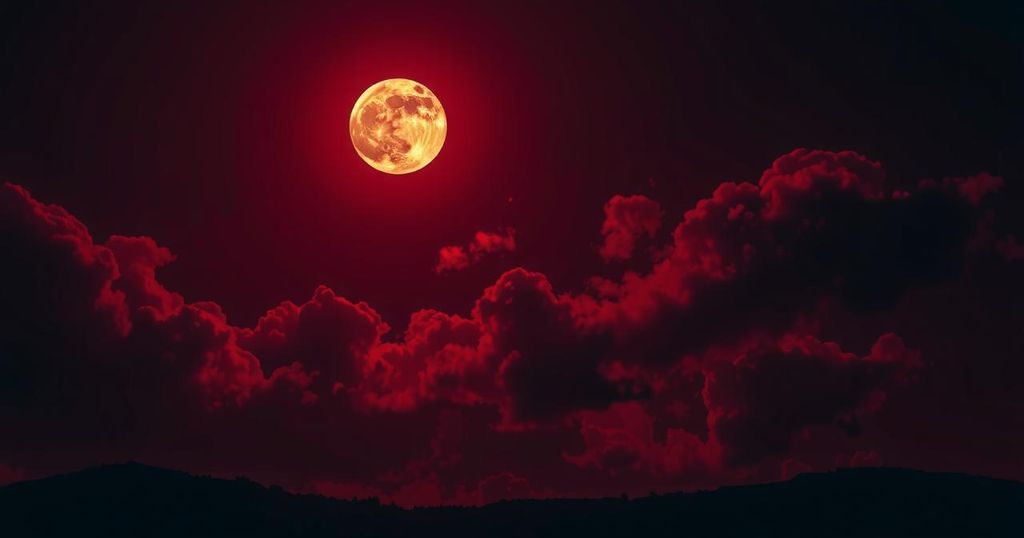Upcoming Total Lunar Eclipse: The Blood Moon of March 2025
A total lunar eclipse, or “Blood Moon,” will occur on March 13, 2025, visible across the Americas and parts of Europe and Africa. The phenomenon occurs when the Earth casts a shadow over the Moon, resulting in a reddish hue. This eclipse, lasting around six hours, will include a brief period of totality. It carries cultural significance and highlights the beauty of astronomical events.
A total lunar eclipse, commonly known as a “Blood Moon,” will occur overnight on March 13, 2025, captivating observers across a large portion of the world. This celestial event will be visible in the Americas, the Pacific and Atlantic oceans, and the western parts of Europe and Africa, presenting a remarkable sight for skywatchers.
During this phenomenon, the Earth will align between the Sun and the Moon, casting a shadow on the latter. As Earth’s shadow obscures the Moon, it will not completely vanish but instead take on a reddish hue. This coloration arises from sunlight being refracted and scattered through the Earth’s atmosphere, reminiscent of red and pink hues observed during sunrises and sunsets.
The lunar eclipse will last approximately six hours, with the total phase, known as totality, occurring for just over an hour. This event is referred to as the “Blood Worm Moon” due to associations with names given to March’s full moons by Native American cultures. In North America, the eclipse will begin at 1:09 am Eastern Time, with totality from 2:26 am to 3:31 am. In France, totality will be visible from 7:26 am to 8:31 am local time.
The viewing experience, however, varies by location. For some, such as individuals in New Zealand, only a partial view of the eclipse will be possible as the Moon rises. While the weather forecast in the United Kingdom is unfavorable, astronomer Daniel Brown expressed hope for a glimpse.
Despite the popular term “Blood Moon,” which Brown critiques for its negative connotations and links to doomsday theories, he recognizes the cultural significance of lunar eclipses in various societies. For example, some African cultures perceive these events as a reminder of unity and collaboration.
Looking ahead, this lunar eclipse will be the first total lunar eclipse since 2022, with another event scheduled for September. Additionally, a “Micromoon” will coincide with this eclipse, signifying that the Moon is at its farthest point from Earth, appearing smaller than usual. Observers can anticipate a partial solar eclipse on March 29, which must be viewed safely with protective glasses or devices.
The upcoming total lunar eclipse on March 13, 2025, presents an extraordinary opportunity for skygazers around the globe to witness a stunning celestial event. With the Moon expected to exhibit a reddish hue during totality, this eclipse is steeped in cultural significance and presents a rare alignment of astronomical bodies. As the scientific community and enthusiasts prepare for this occasion, it serves as a reminder of the beauty and complexity of our universe.
Original Source: www.jamaicaobserver.com




Post Comment